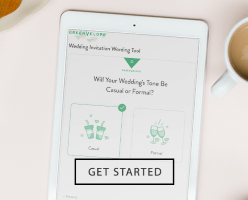Expert Tips for Turning Your Business Event Virtual

For events industry professionals and organizations that consistently plan or host events, the COVID-19 pandemic has presented a question many may have thought they’d never face: can my in-person event transition into a virtual event?
“Right now we have to take it on an event by event basis,” Heidi Hiller of Innovative Party Planners said, of what goes into making such a decision. “There is no one size fits all answer.”
And Hiller is right–there isn’t a one size fits all answer. But, by presenting tips and insights from industry professionals executing successful virtual events right now, our aim is to make the decision to go virtual less difficult for you to make.Â
More than that, we also hope to prepare you to go well beyond that, past the decision-making process, and toward seeing all of the benefits of going virtual.
Setting Your Expectations
Virtual events offer so many opportunities to be successful, engaging, and a stellar experience for attendees, but first you must recognize the ways they are different from in-person events. In-person event hosts use everything at their disposal to engage each of the senses — sight, smell, touch, taste, and sound. While with virtual events, the main thing that you can control is the digital environment, as opposed to the physical space that your attendees occupy. You and your fellow speakers may be on their screen, but, if, for example, your guests have children, and those children are playing, or attending virtual lessons, there’s very little you can do to mitigate potential distractions. As a host, knowing this enables you to remain calm and cool, no matter what occurs, as well as to plan for those distractions. How can you ensure that people can stay engaged with the content, but also re-join throughout the event without feeling lost?
Additionally, consider the expectations you’d have for an in-person event. And then ask yourself: if I’m transitioning my in-person event to a virtual event, can those expectations be met? For example: let’s say you had a grand surprise planned for your guests at the in-person event. Would it be possible to replicate that virtually? If so, how?Â
Asking yourself tough questions about what purpose your event serves and answering those questions honestly, is crucial to a successful virtual event, and leads seamlessly into how to go about setting goals for the event.
Start with the End
Next, think of the end. Transition from expectations to actually setting goals for this event. One of the key benefits of going virtual, as Jack Ford, Head of Marketing at streamGo, points out is, “Bringing your event to the virtual space opens up a lot of new opportunities to measure your event success.”
For example, gauging the total number of attendees and the actions taken after the event (as well as many other metrics) will be far easier to track in a virtual event than it would be with an in-person event. In that way, it’s possible that with one virtual event you learn more about your guests than you ever thought you could.
They may not apply to every virtual event, but common metrics for virtual events include:Â
- Number of total attendees
- Time attendees spent engaging on chat, polls, other interactive elements of the virtual event platform (could become a new segment to target)
- Actions taken after the event (i.e. purchases, downloads, etc.)
- Percentage of attendees that joined live
- Percentage of attendees who watched the replay
Ford also points out that a virtual event enables you to learn a lot about which promotional channels are working for you and which ones aren’t.
“You will be able to see which promo channel drove the most registrations and attendees,” Ford says. “You can also see conversion rates by channel to see which drove the audience with the highest intent to register. Perfect information for your next event or marketing campaign.”
Considering the goals that you will use to gauge success is a key moment to ask yourself whether it makes sense to do pre-recorded content, go 100% live, or have a mix of both. Goals will also help you select what platform makes the most sense for hosting your event. Whether you do a Facebook Live, host on Zoom, or even utilize a gaming platform, all open new opportunities for how you choose to run your virtual event.
The Time & Speaker Equation
Okay, so, you’ve set expectations, and you’ve transitioned those expectations into concrete goals and metrics through which to measure those goals. Now starts the fun part: shifting the ins and outs of your event to the new medium.Â
We particularly love the advice Chris Chan, Founder & CEO of 3C Strategies, LLC has for professionals starting to plan virtual events: “Focus on developing valuable content and great speakers. People don’t have the option to socialize in the hallway with a virtual event–if they sign-up and sign-on for your event, you’ll need to convince them it’s worth it. Really rich content will help sell registration.”Â
In other words, be constantly thinking about providing real value to your guests, the same way you would with an in-person event! Whether it’s a one-day event, or a five-day event, whether you have one speaker or eleven, you’ll also increase your chances of your virtual event being memorable by incorporating different ways for guests to interact with you, with fellow attendees, and with the content.Â
“Break the virtual space into different rooms offering different types of virtual engagements in each,” Hiller suggests. “Allow participants to move around the virtual space, much like they might a game app. Allow a space for conversation, brainstorming, lecture, games, lounges, etc.”
In addition to having multiple ways to interact with the content, many of the experts we chatted with agreed on one particular suggestion: to feature multiple speakers. Does that mean that an event with one speaker won’t work? Not necessarily. But perhaps reserve events with a shorter duration for one speaker–say, 90 minutes to two hours. With anything over that time limit, it might be best to consider bringing in multiple speakers, so that it stays fresh and interesting for your guests.Â
In fact, according to Laurea de Ocampo, Executive Producer at Masaya Events, if you have a longer event planned, you’ll want to keep the idea of screen burnout top of mind. She says, “If you want to have a long event, break it up into several events over the course of a few days or weeks vs. trying to run a 3+ hour virtual event so people don’t screen burnout.”
Ambiance and Presentation Still Matter
Just because your event is being experienced from, say, the couch instead of at the Four Seasons, doesn’t mean that the ambiance should be overlooked. The technology of today is wonderful, and wonderfully convenient, but take it from Dean Levitt, COO of ThymeBase Event Planning Software: “Similar to live (in-person) events, take the time to work on gorgeous backdrops, excellent lighting, and clear-as-a-bell sound. Invest in the visual quality around the speakers, and you’ll wow attendees who are seeing ugly blank walls and dim lights in other events.”
Guests are at home, craving real, valuable content and experiences, and you have an incredible opportunity to provide that for them when they need it most. Presentation will make a big difference in setting you apart from other events. If you have the resources to go a step further, consider this recommendation from de Ocampo:Â
“Work with speakers to ensure they have proper lighting and audio set up, and if not, partner with an AV company to send a presentation kit that could include a laptop with the right software installed, microphone, lighting tree, backdrop, etc.”
And, lastly, rehearse. Rehearse, rehearse, rehearse. Whether you are hosting or have keynote speakers, make sure you (or they) are comfortable speaking in front of the camera ahead of time. With each round of rehearsals, you’ll get more and more comfortable talking in front of the screen, and will soon start to find the rhythms you’re hoping to hit.Â
Spread the Word
Having your goals in mind, and your event details chiseled, makes this part easy–and so much more fun. However you decide to market your event, whether through customizable online invitations, podcast placements, Facebook ads or all of the above, everything we’ve already chatted about in this post comes into play.Â
But first, don’t sell yourself short. You’ve pivoted, you’ve put together a great lineup of speakers and activities that are set to deliver great and valuable content. Communicate that clearly and excitedly, as well as the “newness” of what you have planned (i.e. a break off session where they and other guests play a game together). Tease the value and benefit, and foster a healthy degree of FOMO.Â
Do start communicating about your event early so that you can gauge interest and, if need be, ramp up your frequency of communication.Â
Be Mindful
It’s best to be mindful throughout the entire process of the virtual event, but especially try to slow down and be present while the event itself is happening. Compared to an in-person event where it may be easier to “read the room”, you will be looking for different cues from your audience when you’re sharing a virtual space. Keep an eye on metrics as your event is taking place: Are people sharing links or content on social? Are people leaving the event? Are people engaged with each other whether via chat or break-out rooms? Where are you seeing peaks and valleys in engagement and clicks, and can you use that information to improve the remainder of the event?
At the same time, do remember though that it can be easy to become distracted yourself while trying to pay attention to your guests. Levitt advises those hosting virtual events to maintain a healthy balance of checking in with their guests and maintaining the pace: “This may be counter-intuitive, but don’t get bogged down in audience engagement. For every question posed in the online chat, ten people are rolling their eyes. Don’t prioritize the audience’s involvement over the silent majority.”
Follow Up and Say Thank You
After the event has concluded, take a breath. Pat yourself on the back, too–what you did (pivoting, learning something new, and executing a reframed vision) was a bold and brave step forward. Then, dive into the metrics and gauge how the event was successful and note where (and how) your next virtual event could be better.Â
When thinking of how best to maximize post-event communication with your guests, we love the following suggestion from Cynthia Harder, Virtual Assistant and Owner of Simplify Virtual Solutions: “Following the event, send a brief thank-you email outlining all that has been accomplished and include a link to the replay so attendees can revisit all of the goodness and so people who didn’t make it live can still watch.”
As an added bonus, include a short follow-up survey with your thank you notes to all those who attended. Tip: use a service like Greenvelope.com that allows you to ask different types of questions, particularly open-ended. Asking yes/no questions isn’t unhelpful, but especially if it’s your first ever virtual event, having as nuanced of feedback as you can get could prove to be much more helpful.Â

Because we’re living in unprecedented times, it can feel difficult to locate much certainty right now, specifically in regard to in-person events. As evidenced by how much thought goes into the pivot from an in-person event to a virtual event, one way to gain as much certainty as possible is to be as prepared as possible. de Ocampo suggests that in-person events planned moving forward should also have a virtual event plan as a backup. “This will ensure that the virtual event doesn’t get cobbled together quickly but can benefit from the same lead time as the live event so organizers can make thoughtful decisions about what an in-person event and what a virtual event will look like.”
Finally, remember this: you’re not alone. If it feels strange at first to host a virtual event, or if something goes wrong, don’t sweat it. This is all new for attendees too, who are craving the experience, content, and connection that you’re providing to them. Take a deep breath, be kind to yourself, and be excited about the new opportunities that virtual events offer.


